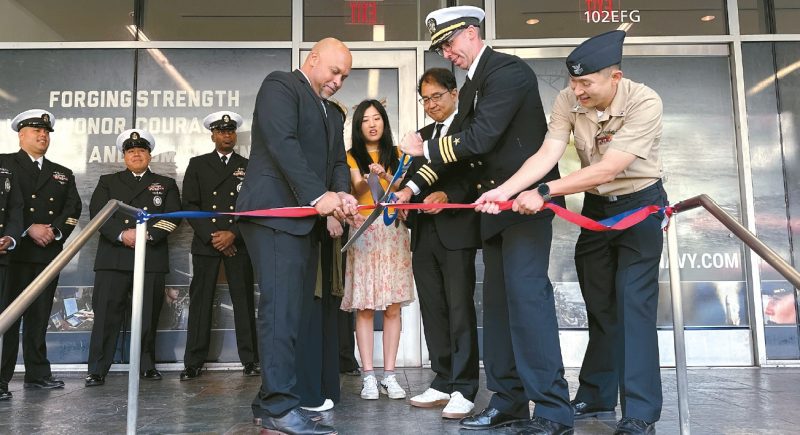The first Navy Recruiting Office opened in Koreatown.
On October 8, a Navy recruiting center opened in Koreatown next to the Army recruiting office across Madang Mall near the intersection of Wilshire Boulevard and Western Avenue. Korean Americans considering enlisting in the Navy now have the opportunity to compare the pros and cons of the Army and Navy at a glance.
The new Navy recruiting center is staffed by Petty Officer First Class Daniel Hyun, the only Korean-American recruiter in California. His presence is expected to make it easier for Korean Americans to get information about the enlistment process, as he speaks both English and Korean.

Until now, there was no Navy recruiting office in Koreatown. The opening was the initiative of Commander David Hooper of the Navy Talent Acquisition Group (NTAG Pacific).
With the addition of the Navy recruiting office, Koreatown is becoming a hub for U.S. military recruitment.
“There is a record of many Korean Americans enlisting through the Army recruiting center in Koreatown,” said Hyun, explaining, ”We moved the Navy recruiting office from downtown to Koreatown due to their growing interest in joining the military.”
Hyun is a Korean-American who immigrated to Los Angeles when he was 6 years old. He joined the Navy at age 25 in 2016. He is currently in his third year as a recruiter. Before that, he worked as a gas turbine system electrician on ships after earning his certification from a vocational school.
“There has been a steady increase in the number of Korean Americans enlisting in the Navy every year,” he said. ”Currently, there are Navy recruiting offices in Koreatown and Crenshaw area in Los Angeles.”
The main advantages of joining the Navy include no combat-related training other than 10 weeks of basic training, no direct combat unless you are in a combat class, the ability to earn certifications through vocational schools after enlistment, and the opportunity to travel to different countries around the world, according to Hyun.
“The Navy has been at the forefront of many technological innovations, from computer coding, engineering, nuclear propulsion, radar and navigation technology, and the foundations of the modern internet,” Hyun said. ”The careers offered by the Navy are transferable to civilian life after service, and can lead to professional careers in a variety of fields, including nuclear engineering, STEM, mechanical engineering, and computer science.”
The U.S. Navy was founded in 1775. Today, it has about 400,000 personnel, about a quarter of whom are in the reserves. More than 80% of the active-duty force is made up of enlisted personnel, while 15% are officers. The remainder are naval cadets at the Naval Academy, Navy ROTC cadets at more than 180 colleges and universities, and officer candidates at the Officer Candidate School. The Navy also has a number of respected Korean-American figures. Lieutenant Susan Ahn Cuddy, the first Korean-American woman in the U.S. military and the first female naval gunnery officer, and more recently, Jonny Kim, a former Navy SEAL who is a Navy aviator, doctor, and NASA astronaut.
BY YOONJAE JUNG, HOONSIK WOO [jung.yoonjae@koreadaily.com]




